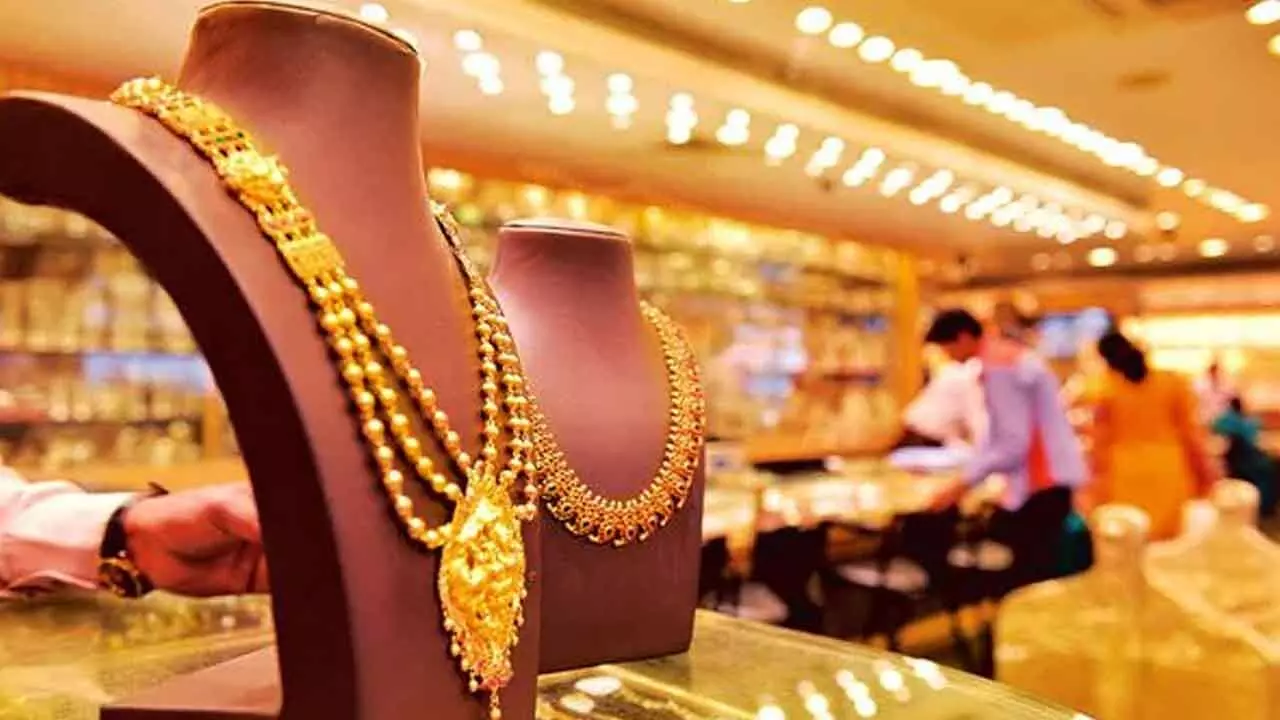Gold Demand Surges As Import Duty Cut Fuels Festive Buying
With organised retail now commanding 38% market share and gold demand expected to rise by 50 tonnes in late 2024, the industry is poised for sustained expansion
Gold Demand Surges As Import Duty Cut Fuels Festive Buying

India’s gold market is undergoing a transformative phase, with the reduction in import duties, rising consumer demand, and a shift toward organised retail driving growth. The festive season has further amplified this trend, with major players like Reliance Retail and Titan intensifying competition in the jewellery sector
With the share market losing steam, India's love affair with gold remains unabated fueled by a recent government decision to slash import duties on the precious metal. The move, announced just weeks ago, has sent shockwaves through the market, triggering a surge in demand that is reminiscent of the country's historic gold obsession.
According to a new report by the World Gold Council, the import duty reduction has led to a 6% month-on-month drop in domestic gold prices, making the yellow metal more affordable for consumers. This, coupled with the ongoing festive season, has created a perfect storm for gold sales. "Anecdotal reports suggest that there has been strong buying interest from jewellery retailers as well as consumers since the duty reduction," the report states.
The allure of gold as an investment has also grown stronger. Gold ETFs (Exchange-Traded Funds) have witnessed substantial inflows, with July recording the highest monthly inflows since February 2020. The report attributes this to recent tax benefits introduced for long-term gold ETF investments.
India's central bank, the Reserve Bank of India (RBI), has also been actively participating in the gold market. The RBI has been steadily increasing its gold reserves, reflecting a strategic move to diversify its foreign exchange holdings.
However, the World Gold Council cautions that while the current gold rush is exhilarating, it's essential to maintain a long-term perspective. Global factors, such as geopolitical tensions and central bank policies, continue to influence gold prices.
The report concludes by projecting that the combined impact of the import duty cut and other supportive measures could boost India's gold demand by an additional 50 tonnes in the second half of 2024.
Call it the new Gold Rush. India’s leading corporate houses are eyeing the burgeoning Rs 6.4 lakh crore jewellery market. “Entering the jewellery business is compelling due to the ongoing value migration from informal to formal sectors, the rising consumer preference for strong, trusted brands, and the ever-booming wedding market, all of which present substantial growth opportunities.
Not to be left behind, Reliance Retail announced its entry into the ultra-luxury jewellery market this year, signalling plans for further investment in the sector. To build on their first-mover advantage, national players like Tanishq and Kalyan Jewellers are delving deeper into their existing markets, while regional brands like Joyalukkas and Senco are eyeing pan-India expansion. As the festive season approaches, these brands are stocking their shelves with festive-themed jewellery and luring customers with promotions and gifts.
According to a report by financial services firm Motilal Oswal, jewellery is now the most organised retail category in India after apparel and footwear, with 36-38 per cent market share of the overall jewellery market, up from 22 per cent in FY19. While the organised segment is growing at 18-19 per cent, the overall market has expanded by a compounded annual growth rate (CAGR) of over 8 per cent during FY19-24.
India is the second-largest consumer of gold after China, with annual consumption ranging between 700 and 800 tonnes. Of this, 66 per cent is for jewellery, the rest for bars and coins. Most of this demand is met through imports. During FY24, imports increased by over 34 per cent to Rs 3.8 lakh crore from Rs 2.8 lakh in the previous year due to strong domestic jewellery demand, according to Centre for Monitoring Indian Economy (CMIE) data. With the favourable consumption sentiment, retail players have been significantly expanding over the past 4-5 years.
Titan, a leading player with an 8.5 per cent market share, has been well-established since launching Tanishq in 1994. Titan’s jewellery division is now growing at a CAGR of 15-20 per cent with a Rs 38,352-crore turnover (excluding Rs 3,940 crore bullion sale) and operates stores in various formats—company-owned, franchisee-operated (COFO) and franchise-owned, franchise-operated (FOFO) stores in addition to the company-owned stores.
For Titan, some smaller 3,000 sq ft stores were expanded, or a dedicated floor for bridal jewellery with a lounge to enable consumers to try jewellery with their wedding attire, or customer event spaces, were added. Over 150 Tanishq stores now have dedicated wedding floors. As a result, the brand saw a 16 per cent same-store sales growth.
Over the last couple of years, gold prices have been rising rapidly due to the increased demand, geopolitical uncertainty and inflationary pressures. The average price of 10 grams was Rs 29,289 in FY18, which steadily rose every year before reaching Rs 60,608 in FY24. Gold jewellery, though, attracts a GST of 3 per cent.
The future certainly looks bright for the organised jewellery segment. Is it time then to bid goodbye to the neighbourhood goldsmith?

